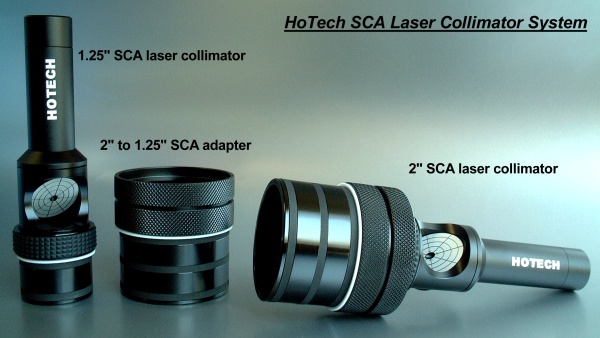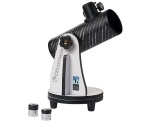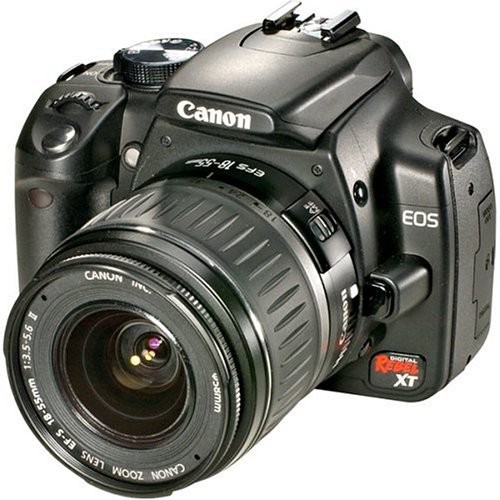
Astronomy Products
Give you more time for unforgettable Astro-images
Astronomy Products – Laser collimators are indispensable tools for aligning the optics of your time-machine-to-the-stars, but many laser collimators of the past had an inherent weakness in which the collimator wasn’t centered in the focuser. This often caused a small gap to exist between the collimator and the focuser’s drawtube, no matter how precise the machining of the collimator’s barrel. HOTECH’s SCA Laser Collimators have solved this problem using a Self-Centering Adapter (SCA) using rubber compression rings that expand evenly against the drawtube and center the collimator perfectly straight in the focuser.
Innovations in design and function
A clever idea that works by using three perfectly aligned laser beams to simulate the parallel rays coming from a distant star, HOTECH’s SCA Laser Collimators work great for quickly aligning the optics of your time-machine-to-the-stars. Stargazers using Ritchey-Chretien, Dall-Kirkham, Schmidt-Cassegrain, and Maksutov-Cassegrain telescopes can quickly, efficient and reliably prepare their telescope to continue their “Journey to the Beginning of Space and Time”, using the only effective method known to collimate their time-machines-to-the-stars.
HOTECH’s SCA Laser Collimators allow users to perform collimation indoors or outdoors, day or night, using a clear and simple to read display located within a short focal distance of the telescope for diagnosing alignment problems with a telescope optical systems without guess-work. Avoid the frustration of moving between the front and back of your telescope adjusting the corresponding alignment screw, while holding your breath and looking through a high magnification eyepiece trying to reference the concentricity of an image out of focus with HOTECH’s SCA Laser Collimators. You’ll have more time for viewing the universe and taking the unforgettable Astro images you really did all of this work for.
An indispensable tool for the astronomer
Check out my latest astronomy website at http://astronomytonight.yolasite.com/.
Learn how NASA astronomers are planning on detecting extraterrestrial moons orbiting distant suns https://spaceshipearth1.wordpress.com/2013/12/31/searching-for-extraterrestrial-moons/.
Read about the latest news on life beyond Earth https://spaceshipearth1.wordpress.com/2013/12/25/the-search-for-life-beyond-earth-takes-a-turn-at-jupiter/.
Take a look at the latest natural color images taken by the Cassini spacecraft https://spaceshipearth1.wordpress.com/2013/12/22/cassini-spacecraft-show-views-of-the-solar-system-in-natural-color/.


























